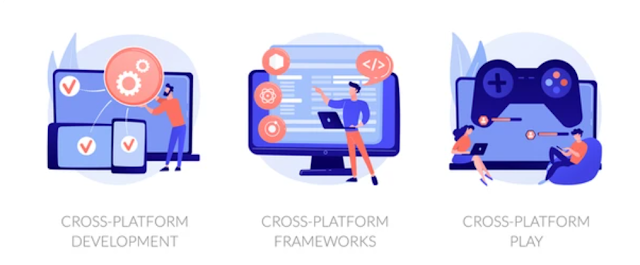Mastering Frontend Frameworks: Exploring React, Angular, and Vue.js
Frontend frameworks have revolutionized web development, enabling developers to build complex and interactive user interfaces with ease. Among the popular choices, React, Angular, and Vue.js have emerged as powerful frontend frameworks with their unique features and advantages. This article delves into these frameworks, exploring their key concepts, benefits, and guiding developers on how to master them.
React:
React, developed by Facebook, is a JavaScript library for building user interfaces. It follows a component-based architecture, where the UI is divided into reusable components. Key features of React include:
- a. Virtual DOM: React uses a virtual representation of the DOM, allowing efficient updates and minimizing direct manipulation of the actual DOM, resulting in improved performance.
- b. JSX: JSX is a syntax extension that allows developers to write HTML-like code within JavaScript, making it easier to create and manage components.
- c. Unidirectional Data Flow: React follows a unidirectional data flow, ensuring that data flows in a single direction, making it easier to track and manage application state.
Angular:
Angular, developed by Google, is a full-featured frontend framework. It utilizes TypeScript, a statically-typed superset of JavaScript. Key features of Angular include:
- a. Two-Way Data Binding: Angular provides two-way data binding, automatically synchronizing data between the model and the view, simplifying the process of updating the UI based on changes in data.
- b. Dependency Injection: Angular has a powerful dependency injection system that promotes code modularity and reusability by allowing components to be easily managed and tested in isolation.
- c. Reactive Programming: Angular leverages the RxJS library for reactive programming, enabling the handling of asynchronous events and managing complex data streams effectively.
Vue.js:
Vue.js is a progressive frontend framework known for its simplicity and flexibility. It combines the best features of both React and Angular. Key features of Vue.js include:
- a. Reactive Components: Vue.js allows developers to create reactive components, where changes in data automatically update the associated views, making it easy to manage state and UI updates.
- b. Templating: Vue.js uses a template-based syntax that allows developers to define the structure and behavior of components using familiar HTML-like templates, simplifying the development process.
- c. Lightweight and Performant: Vue.js is lightweight and performs well, making it ideal for small to medium-sized projects. It also offers easy integration with existing projects, allowing developers to gradually adopt it.
Mastering the Frameworks:
To become proficient in these frameworks, consider the following steps:
- Start with the Basics: Begin by understanding the core concepts, syntax, and features of each framework. Familiarize yourself with component-based architecture, virtual DOM, two-way data binding, and reactive programming.
- Hands-on Practice: Create small projects or work on tutorials to gain hands-on experience with each framework. Practice building components, managing state, and handling events within the framework's ecosystem.
- Explore Ecosystem and Tools: Dive into the vast ecosystem of libraries, tools, and community resources available for each framework. Learn about popular libraries for state management (e.g., Redux for React, NgRx for Angular, Vuex for Vue.js) and build tools (e.g., Create React App, Angular CLI, Vue CLI).
- Build Real-World Applications: Progress to building real-world applications to apply your knowledge and gain a deeper understanding of the frameworks' capabilities. Practice integrating backend APIs, implementing routing, and handling form validations.
- Stay Updated and Engage with the Community: Frontend frameworks evolve rapidly, so stay updated with the latest releases, best practices, and trends. Engage with the vibrant communities surrounding React, Angular, and Vue.js, participate in forums, attend meetups, and follow influential developers to learn from their experiences.
Conclusion:
Mastering frontend frameworks like React, Angular, and Vue.js opens up a world of possibilities in building powerful, scalable, and interactive user interfaces. By understanding the core concepts, practicing hands-on, exploring the ecosystem, building real-world applications, and staying engaged with the community, you can become proficient in these frameworks. Each framework has its own strengths and advantages, so choose the one that aligns with your project requirements and personal preferences. Continuously refine your skills and keep pace with the evolving landscape of frontend development. Embrace the power of React, Angular, or Vue.js to create engaging and dynamic web applications that delight users and push the boundaries of web development.











